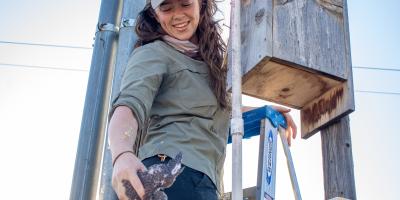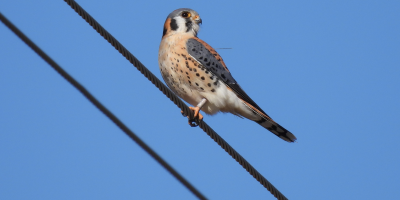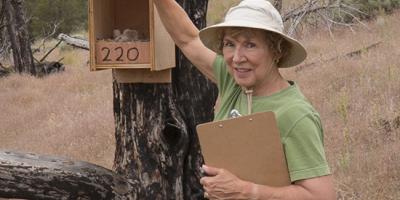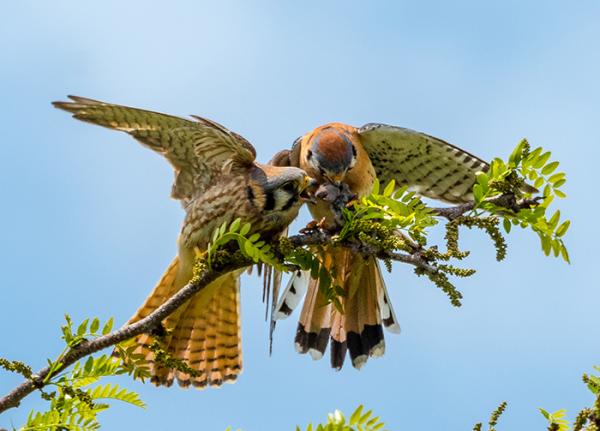American Kestrels are North America’s most plentiful falcon, hovering over agricultural fields, pastures, rural roadsides, and even suburban backyards and city skylines to hunt insects, rodents, and other small prey. This small falcon is familiar even to casual observers, but a look at population levels reveals a perplexing mystery: continent-wide, kestrels have declined by nearly half since the 1960s.
Recent research seems to indicate that rather than there being one singular cause of this decline, it is likely there are multiple causes. Kestrels in one part of North America may be reacting to threats differently than those in other parts of the continent, or facing different threats entirely. Some researchers are now focusing on the "where" and the "when" of kestrel decline rather than directly on the "why"—if we can determine at what part of the globe and at what age or time of year kestrels are most threatened, we can use that information to zero in on the causes. We're partnering with Boise State University to support breeding research here in Idaho, with the University of North Texas to study migration patterns and survival rates, and with other researchers range-wide to accomplish one singular goal: identify the causes of kestrel decline now and keep this common species common.
Threats to American Kestrels

Matthew Danihel

Heather Bullock

Tipton






